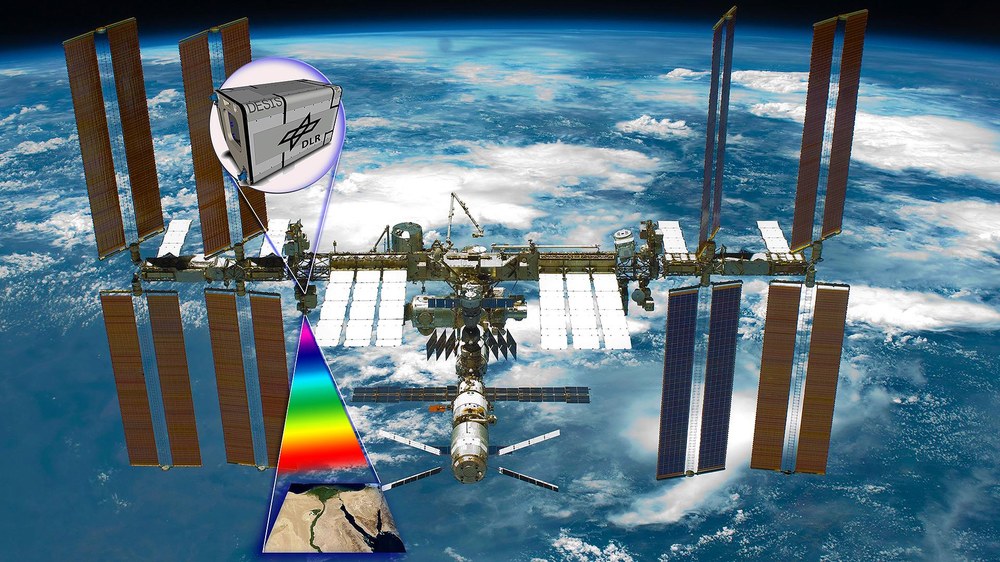A new generation of environmental monitoring – the DLR DESIS spectrometer begins routine operations on the ISS



Space: Space, Earth observation, Global Change
On 23 October 2019, the German Aerospace Center (Deutsches Zentrum für Luft- und Raumfahrt; DLR) and the U.S. company Teledyne Brown Engineering (TBE) will announce the start of routine operations for the 'DLR Earth Sensing Imaging Spectrometer' (DESIS). This instrument will be operated by DLR and TBE. It is the most powerful hyperspectral Earth observation instrument in orbit and addresses a wide range of applications. Its high-resolution image data will enable the development of measures for environmental protection and support the more efficient, ecological use of agricultural land.
Hansjörg Dittus, DLR Executive Board Member for Space Research and Technology stated: "This mission is already a complete success. Monitoring changes in our environment and searching for resources are among the most important tasks for our society today."
The hyperspectral Earth observation instrument provides images with a one-of-a-kind level of quality. The sensor system collects image data in 235 closely spaced spectral bands from on board the International Space Station (ISS), at an altitude of 400 kilometres. It has a ground resolution of 30 metres and a spectral resolution of 2.55 nanometres. This significantly increases the depth of information available in Earth observation data. The first images were acquired shortly after initial setup and DESIS data has already been used to identify plastic islands and oil slicks at sea. A few months ago, the high spatial resolution of DESIS made it possible to detect rare Earth elements (REE) from space for the first time.
Scientists can also use the DESIS data to investigate changes occurring in ecosystems on Earth's land surface and in its waters. For example, they can use it to assess the health of forests. The data can also be used to evaluate agricultural land in order to make meaningful yield forecasts. In addition, the data are available quickly enough to be able to provide rescue workers with detailed on-site information in the event of a disaster.
"With DESIS, DLR now has much sought-after hyperspectral data from space at its disposal for research purposes," says overall project manager Uwe Knodt, summing up the latest successes. "We are receiving requests for data from all over the world." Many countries already have hyperspectral space missions, but there is no other project with comparable imaging quality. TBE is responsible for the commercial distribution of the data. Research institutions can obtain the data from DLR for scientific purposes. Details are available on the DLR Earth Observation Center (EOC) DESIS page under the menu item 'Data Access'.
In late August 2018, German ESA astronaut Alexander Gerst unpacked DESIS and prepared it for installation, moving it to one of the airlocks on the ISS. From there, a robotic arm was used to position it on the 'Multiple User System for Earth Sensing' (MUSES) Earth observation platform, which is attached to the exterior of the space station. The project was made possible by a unique partnership between DLR and TBE that significantly reduced mission costs, particularly for the launch. TBE also partly financed the development of the instrument. DESIS is therefore a particularly cost-effective space project, and its results are setting a new standard for hyperspectral missions.
